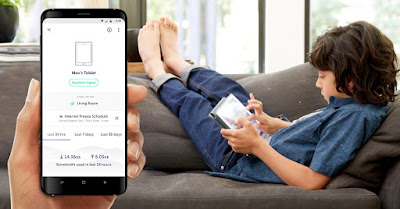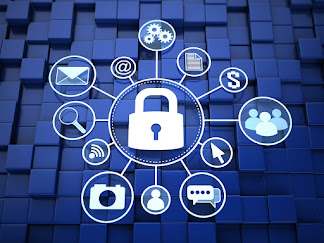CHILDREN PROTECTION WITH PARENTAL CONTROL
“A better Internet begins with you: living with respect for a secure Internet”.
Until just a few years ago, the term Internet of Things (IoT)
referred to a single device: the computer. However, with the advancement of new
technologies, more and more IoT devices are available on the market. From
mobiles or tablets, to watches, household appliances, medical devices and even
toys. Although the possibilities offered by technology are endless, so are its
risks.
1. If
your child is under 14 years old, do not allow him to open profiles on any type
of social network
Social media can be very dangerous if not used properly. Given
the amount of personal information stored and shared in them, the youngest are
an especially vulnerable group. So much so, that practices such as grooming -a
type of harassment in which pedophiles, through deception, try to gain the
trust of the minor- are more common than parents believe.
2. If you
already have social networks, configure your privacy
If your child is over 14 years old and already on social
networks, make sure that their settings are (cyber) secure and that only their
acquaintances can see their publications. To do this, check the settings and
permissions of each of their profiles. In this way, you can considerably reduce
the chances that your child may be the victim of any type of Cyberbullying.
3. Avoid sharenting
Do not post images or videos of your underage children on
social networks (sharenting). This practice, whose name is the result of the
conjunction of the English words share (share) and parenting (raise), is used by many parents who are not
aware of the risks of exposing their children on the Internet. The content you
upload to your networks will remain on the network forever and, it is possible,
that your child will be embarrassed about it in the future or that it will be used
by their peers to harass them as a teenager.
4. Verify
that it closes the sessions of the devices
Verify that your child closes the session in their social
networks whenever they access from a device, even if they do it from home with
their own computer. This will prevent them from entering regularly and
accessing at inopportune moments, such as when going to bed.
5. Explain
the importance of privacy on the web
Inform your child of the importance of not sharing private
information over the Internet, either through social networks, instant
messaging applications or by email. This information includes personal data,
location, or compromised photos and videos. This last case, known as sexting ,
is a real problem among today's young people, because the moment they send
those files they lose control over them and have no way of knowing in whose
hands they may end up.
6. Install
a parental control on their devices
Install the best parental control on home
devices to avoid possible attacks. Web browsers also include options to add
extensions that help protect user privacy. When a cybercriminal takes control
of your devices, they have access to all personal information, including that
of minors.
7. Use
different and strong passwords
Make sure there is a different password for each account or
service that your child manages and that they are strong. That is, long and
with characters of different types. You can change your child's personal
passwords yourself to be more secure.
8. Check
your apps
Ask your child to notify you before installing any application
on their devices, so you can read the requested permissions. All applications
require the acceptance of a series of permissions to be able to install them.
These may include access to the location of the device, the image gallery or
the email account. If you consider that access to this information may be
dangerous, it is better that this application is not installed.
9. Prevent
access to confidential information by Parental Control
Check the synchronization of the different services and
applications installed on the device. Some application may be accessing
confidential information.
10. Are smart toys (cyber) safe?
Find out about the characteristics of smart toys, or smart
toys, that your child has. Try to use them only in your presence and check that
he disconnects them when he is finished. Although they may seem like harmless
items, the mere fact of having access to the Internet makes them dangerous if
certain precautions are not taken.



Comments
Post a Comment